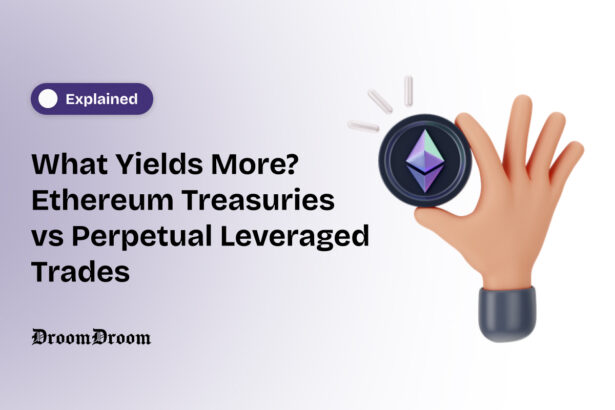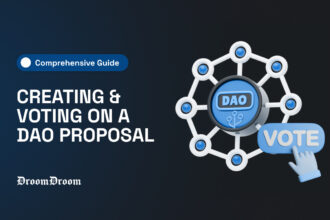Ethereum Treasuries and other Digital Asset Treasuries have grown faster than any other new kind of crypto asset. They provide complete control over Ethereum for the investor while giving them staking and other DeFi benefits, which the ETFs don’t. However, there is one more asset class, which is way riskier but gives much higher returns than any other Ethereum asset.
In this article, we will understand how Perpetual Leveraged Trades work and how they outperform other spot or leveraged crypto assets, such as Ethereum ETFs and Ethereum Treasuries.
Investing only in ETH? Here are the top domains that gave huge returns to their buyers.
What are Ethereum Perpetual Leveraged Trades?
Leveraged Trades are those where you put only a fraction amount of money to carry out a trade (stock or crypto) that would otherwise require you to put a lot more money, often several times. The benefit of such a trade is that your risk is limited (till margin) while your rewards could be unlimited.
Most leveraged trades expire on a certain day of the week or month. On expiry, these trades are settled, and your profits and losses are calculated. However, some trades never expire. They only expire when the leverage gets too high, or they run deep into losses, or too high into profits.
A kind of these trades is the Perpetual Leveraged Trade, which runs perpetually as long as the trade maintains the margin requirements.
#Note: Margin is the minimum amount you need to put before opening a leveraged trade. This amount serves to cover your losses, should the trade go against your expectations.
Often, leveraged trades start with a 2x multiple and can go up to 100x. Here, x means how many multiples you can trade with respect to your money in hand. For example, a 2x trade means you are allowed to trade twice the amount you have, i.e., if you have $100, you can place a trade worth $200. Similarly, a 10x leverage would allow you to trade for $1000 if you have $100.
Such trades are very common for Ethereum, and almost every exchange allows users to trade them. However, there could be different margin requirements.
Comparison of Leveraged Perpetual Trade Yields with Ethereum Treasuries and ETFs
Treasuries, ETFs, Leveraged Trades, Perpetual Leveraged Trades, and all other forms of financial instruments rely on the price of Ethereum for price changes. However, all of them use price in distinct ways.
- Ethereum ETFs depend on the spot Ethereum price and pass you the gains or losses after deducting some fees.
- Ethereum Treasuries also depend on spot price, and pass you gains and losses after benefits or losses after deducting the cost of shareholder funds, debt funds, etc.
- Ethereum Leveraged Trades, both expiry-based and leveraged trades, allow you to bet in multiples of your own funds, allowing you to reap gains much higher than the invested amount.
Why Leveraged Trades Prove Better?
Leveraged Perpetual Trades prove better than other trades for two major reasons. First, these trades do not expire, and hence you could continue your trade as long as you maintain the margin requirements. Second, because they are leveraged, they can provide multiple times returns for the same price movement in Ethereum as other assets.
Leveraged Trades fare better when they are paired with better risk management. With some discipline and eliminating emotions, traders can easily outperform any ETF, leveraged ETF, Ethereum Treasury, or spot ETH holdings.
Here’s what a successful leveraged trader looks like in the real world.
Let us analyze a real-life situation. Consider when Ethereum was at $3000 in June 2025. For those who had bought ETFs, the gains till October 2025 would be around 30%. This would be the same for spot and Treasury shares buyers.
For leveraged trades, a 10x leverage on the same price movement would yield around $15,000. However, the risk would be much higher too. These trades would be forcibly liquidated by the exchange at $300 price fall (assuming a margin of $3000).
Crypto Risk Management With AI Agents: The New Way to Trade Profitably In The Volatile Crypto Market




















